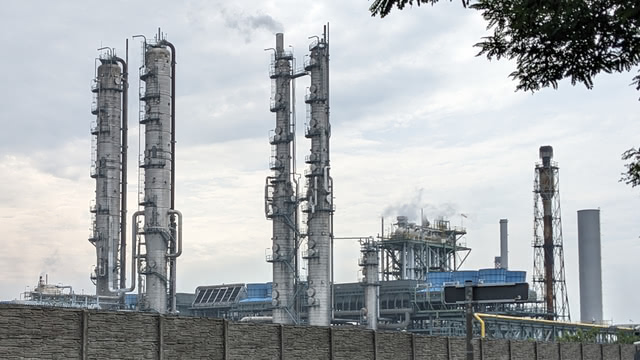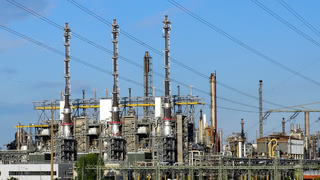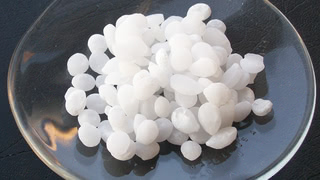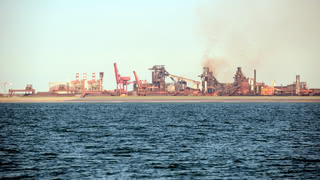What we do not know about Planet-Warming Hydrogen Emissions
In the atmosphere, hydrogen acts as an indirect greenhouse gas. Recent studies show that its warming potential is higher than previously thought, causing concerns about a much wider use of hydrogen in the future. Yet, very little is known about hydrogen leakage rates.

Hydrogen technologies promise to reduce emissions in sectors where alternatives are difficult to find, like in the production of steel or chemicals. Some even think hydrogen should be used much more broadly, for example, in residential heating or fuel-cell cars.
But hydrogen can be and currently is a climate problem. Almost all existing hydrogen production comes from gas and coal, and before it can become a climate solution, hydrogen production itself needs to change. More recently, another climate problem of hydrogen came into the spotlight: hydrogen that leaks into the atmosphere contributes to global warming.
Hydrogen does not directly contribute to the greenhouse effect like CO₂ or methane, but it impacts the atmosphere's chemistry. In the troposphere, the lowest layer of the earth's atmosphere, hydrogen impacts hydroxyl radicals. These hydroxyls consist of a hydrogen and an oxygen atom and only exist for seconds before they react with other molecules like hydrogen or methane.
When there are more hydrogen molecules in the troposphere, that slows down the destruction of methane. In other words, more hydrogen in the atmosphere causes methane to warm the planet more.
Hydrogen also leads to ozone formation in the troposphere, which causes additional warming effects. Furthermore, in the stratosphere, the layer above the troposphere, hydrogen can react with oxygen and create a warming effect due to the formation of water vapor.
While older studies have only examined the stratospheric effects, multiple recent studies have looked at the combined warming of all known effects. The warming impact of greenhouse gases is usually given as the global warming potential, comparing its effects over a specific time span to CO₂. The most common metric is the warming potential over 100 years, also called GWP100.
Hydrogen's warming potential twice as high as previously thought
A study by researchers of the CICERO Center for International Climate Research in Oslo, Norway, published in 2023 (Sand et al.), estimates the global warming potential of hydrogen over 100 years at 11.6 (±2.8). The researchers simulated the effects of hydrogen in five different atmospheric models. Other recent studies (Warwick et al. 2023, Hauglustaine et al. 2022) had similar results. The values in these more recent studies are about twice as high as the estimates in older studies.
However, the GWP100 value does not give the full picture of hydrogen's warming impact. As two researchers working for the NGO Environmental Defense Fund highlight in another study, hydrogen has a much higher warming potential in the short term. Its global warming potential over 20 years, or GWP20, is around 37.
This echoes debates about the impact of methane emissions. Methane is the main component of fossil gas, and methane emissions from gas drilling and infrastructure are a substantial problem. Like hydrogen, methane's impact in the short term is much higher than in the long term. GWP100 is the standard metric used in most climate research, but some argue using GWP20 would be more meaningful. (The GWP20 vs. GWP100 debate is complex and outside the scope of this article.)
Plans to massively increase the use of hydrogen have alerted environmentalists and scientists about its potential warming effects. If a future hydrogen infrastructure causes diffuse emissions through leaks or venting during maintenance operations, it could undo some of the emission reductions of clean hydrogen technologies.
A look at the emissions of existing hydrogen infrastructure could give insights into the scale of the problem and how to avoid or reduce these emissions. Hydrogen is already used in the chemical industry today, primarily for ammonia production. It is usually made from fossil fuels. Some hydrogen is likely leaking from chemical plants that make or use hydrogen.
However, knowledge about existing and future hydrogen leakage rates is limited. While the hydrogen concentration in the atmosphere can be measured, it can come from different sources. Apart from the leakage of hydrogen used in the industry, it is also produced by natural processes and due to the combustion of fossil fuels.
I contacted several companies that operate large-scale facilities that handle hydrogen. I asked whether they knew how much their facilities emit. None of the companies I contacted answered — those included BASF, Linde, Yara, and Dow.
Data about emissions of greenhouse gases and other pollutants from industrial facilities is often publicly available on government-operated platforms. But if one tries to look up the emissions of facilities using hydrogen – here's the largest ammonia factory in the United States, here's the largest one in Germany – they do not report hydrogen emissions.
Dirk Günther from the environmental agency in Germany (Umweltbundesamt), the institution that operates Germany's emissions inventory, informed me that all regulation on greenhouse gas emission reporting is based on guidelines by the United Nations Framework Convention on Climate Change (UNFCCC). Those currently do not list hydrogen as a greenhouse gas to be reported. The UNFCCC's press office did not answer questions whether there are any plans to change this.
According to Dirk Günther, there are currently no plans to include those emissions in the reporting guidelines. "This is also because the data on hydrogen sources and the methods for calculating emissions from these sources are currently not sufficient."
Before emissions can be measured, sensors need to be available
I talked to Ilissa Ocko, a scientist working for the US organization Environmental Defense Fund (EDF) and co-author of one of the abovementioned studies. According to Ocko, one key challenge in measuring and reporting these emissions is that sensors capable of detecting them are not widely available yet.
Until recently, the main concern with hydrogen leaks was safety. Hydrogen only becomes a safety hazard in high concentrations, and existing measuring instruments are built to accommodate that. They cannot measure the much lower concentrations caused by small leaks in hydrogen infrastructure and total site-level emissions.
But that is now changing. In early 2023, EDF tested a new precise hydrogen sensor developed by the company Aerodyne Research with funding from the US Department of Energy. According to EDF, the device delivered very accurate measurements. It is in the process of being commercialized, and according to Ocko, multiple other companies and institutions are working on similar devices. "EDF is now leading a measurement campaign to start collecting the first-ever dataset of hydrogen emissions from industry."
Despite limited knowledge about hydrogen emissions and the lack of measurements, some estimates exist. A report published by researchers from Columbia University in 2022 summarizes the existing knowledge and studies about emission rates.
Notably, the Columbia researchers point to experiments done by the US National Renewable Energy Laboratory in 2013 that measured relatively high losses in electrolyzers of around 4 percent. If those are not avoided, green hydrogen, made by splitting water with electrolysis powered by green electricity, could have higher hydrogen leakage rates than existing hydrogen production based on fossil fuels or blue hydrogen made with carbon capture and storage (CCS). However, this is not necessarily an argument for blue and against green hydrogen, as blue hydrogen comes with methane upstream emissions that have a larger impact than hydrogen leakage.
The Columbia report also indicates that transporting liquid hydrogen by truck would likely have higher emissions than other transport methods, primarily due to the so-called boil-off losses. This could be particularly problematic for the widespread use of hydrogen in road transport, as it would require distributing it to decentralized and often small fueling stations.
A report written by researchers from Fraunhofer ISI for the German Environmental Agency mentions that some energy scenarios with a higher share of hydrogen may be particularly problematic regarding diffuse hydrogen emissions. Such scenarios would assume that hydrogen is transported not just in larger gas transport grids but also in local gas distribution grids. Such distributed distribution grids would imply more grid maintenance procedures and points like valves that could cause hydrogen leakage.
In Germany, grid operators plan to build a hydrogen transmission grid that will partly reuse existing fossil gas pipelines. I contacted FNB Gas, the association of gas grid operators, about those plans and concerns about hydrogen emissions.
"The German transmission system operators are aware of this fact and are taking extensive organizational and technical measures to avoid the release of hydrogen," Mehtap Corallo from FNB Gas wrote. "Here, we can rely on the long-standing practices that are and were already used in the existing natural gas infrastructure to prevent the release of greenhouse gases." FNB Gas expects that hydrogen emissions from the new hydrogen grid will be significantly lower than those from the current natural gas infrastructure.
UK Hydrogen Standard already requires an Emissions Reduction Plan
While knowledge is still limited, hydrogen producers should be prepared for future regulations and requirements to limit diffuse hydrogen emissions and leakage.
In the UK, a national standard for producing low-carbon hydrogen already contains requirements to address these emissions. While they do not yet have to be reported and accounted for, hydrogen producers must create a "Fugutive Hydrogen Emissions Risk Reduction Plan". This plan should demonstrate "how the Hydrogen Production Facility will be designed and operated to ensure that expected fugitive hydrogen emissions are kept as low as reasonably practical."
Given the uncertainties, it is difficult to say how big the problem of diffuse hydrogen emissions is. But a rough calculation gives an idea.
According to the International Energy Agency (IEA), the world produces around 95 megatons of hydrogen today. If around 10 percent is lost due to leakages – a number at the high end of estimates but not completely implausible – that would be around 0.2 percent of total greenhouse gas emissions today (55 GtCO₂eq) when considering an impact over 100 years (GWP100).
In a low-carbon future, the amount of hydrogen used is expected to be much larger. The IEA's Net Zero Emissions scenario estimates a hydrogen market of 430 megatons in 2050, primarily from clean sources. If ten percent of that leaks, it would have a warming effect of 3,3 percent of the expected residual emissions in that scenario (15 GtCO₂eq) that would have to be compensated. If only one percent leaks, it would be 0,33 percent. For a 20-year impact (GWP20), all of those estimates would be around three times as high.
That is large enough to be a concern and shows that it is worth keeping emissions from hydrogen leakage low. Still, these diffuse emissions do not question the usefulness of clean hydrogen technologies.
Matia Riemer, a researcher at Fraunhofer ISI and one of the authors of the previously mentioned report for the German Environmental Agency, told me: "The studies we evaluated usually come to the conclusion that these hydrogen emissions are substantially smaller than the emissions from fossil fuels that hydrogen would replace."
This is particularly true in areas where hydrogen has a very high emission reduction potential. For example, hydrogen is currently considered the most promising way to decarbonize steel production. Coal and gas used in steelmaking are responsible for around five percent of global greenhouse gas emissions. If hydrogen can substantially reduce those, that could easily have a larger impact than any potential diffuse hydrogen emissions.
The case is less clear for hydrogen use cases where alternatives exist, and emissions are potentially higher due to the required infrastructure. Put differently, diffuse hydrogen emissions are one more argument against the widespread use of hydrogen in road transport or residential heating.
While hydrogen as an indirect greenhouse gas is likely not a huge climate problem now, it could become more concerning in the future. Matia Riemer says: "It is crucial to reduce hydrogen leakages as much as possible. As a first step, it is important to establish monitoring of these emissions."
Update (2025-01-04): When this article was published in May 2024, almost no actual data on industrial hydrogen emissions was available. This changed in October 2024, when a study measuring hydrogen emissions at a chemical park in the Netherlands was published in the scientific journal Nature. The researchers found significant hydrogen leakage rates between 1 and 4 percent.
Author: Hanno Böck
Brief
-
In Austria, the company Laufen — part of Roca Group — has recently started operating an electric kiln for the production of ceramics. Operating at around 1.200°C, it is an example of how even high-temperature heat can be electrified.
-
LinkedIn has recently started autogenerating articles with "AI" technology, and it invented a study about the carbon footprint of smartphone production that does not exist.
-
We have extensively covered CCU processes for making e-fuels or e-chemicals in previous newsletters. Different technology paths for CCU exist, with the main ones being the methanol-based route (methanol-to-olefins/gasoline/kerosene) and the Fischer-Tropsch process. A study published in the scientific journal Fuel compares the energy and carbon efficiency of e-kerosene production with these two routes. There is no clear-cut winner in this comparison, as it depends on factors like the use of by-products. (Fischer-Tropsch is less selective in its outcomes than the methanol pathway.)



